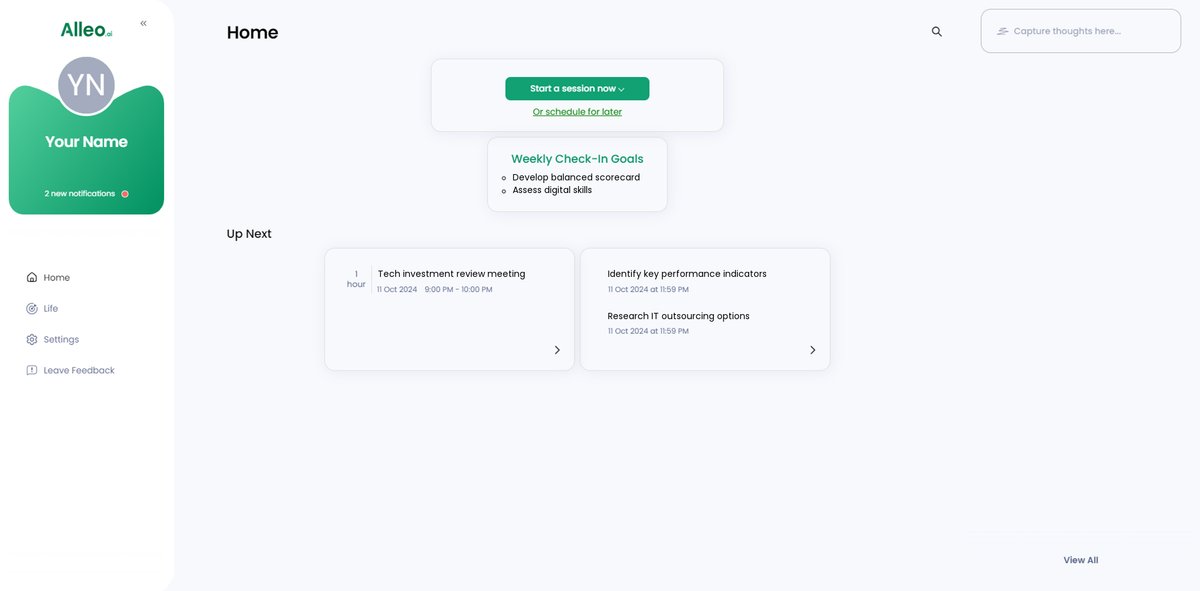5 Powerful Strategies for Nonprofits: Balancing Tech Investments with Core Mission Activities
Are you struggling to balance technology investments with your nonprofit’s core mission activities? Achieving the right nonprofit tech investment balance can be challenging.
As a life coach, I’ve helped many nonprofit leaders navigate these challenges. In my experience, resource allocation is a common hurdle for many nonprofits, especially when it comes to digital transformation in charitable organizations.
In this article, you’ll discover actionable strategies to balance tech investments and mission activities. We’ll explore solutions like the Balanced Scorecard, capacity building, and more. From nonprofit technology budgeting to implementing impact measurement tools for nonprofits, we’ll cover key aspects of mission-driven tech adoption.
Let’s dive in and explore how to optimize your nonprofit tech investment balance.
Understanding the Resource Allocation Dilemma
Navigating the nonprofit tech investment balance between technology investments and mission-focused activities can be daunting for nonprofits. Many organizations face the challenge of limited resources, which makes it difficult to allocate funds effectively for nonprofit technology budgeting.
Failing to find this balance can lead to inefficiencies, mission drift, and financial strain. For instance, I often see nonprofits struggling to maintain their core activities while managing new tech initiatives as part of their digital transformation in charitable organizations.
The pressure to embrace digital solutions is ever-increasing. However, without a strategic approach to mission-driven tech adoption, your organization can easily become overwhelmed.
Let’s explore how to tackle these challenges.

Strategic Roadmap for Balancing Tech Investments and Mission Activities
Overcoming this challenge of nonprofit tech investment balance requires a few key steps. Here are the main areas to focus on to make progress:
- Develop a balanced scorecard for tech investments: Identify key performance indicators that align with your mission goals and nonprofit technology budgeting.
- Implement capacity building for digital skills: Enhance staff digital literacy and technical skills to support digital transformation in charitable organizations.
- Explore outsourced IT solutions for cost savings: Conduct a cost-benefit analysis of outsourcing IT services, including cloud computing for nonprofit organizations.
- Align tech projects with mission-critical goals: Prioritize tech projects that directly support your mission and consider impact measurement tools for nonprofits.
- Create a tech investment ROI measurement system: Define clear criteria for measuring the return on investment, including fundraising technology ROI.
Let’s dive in!
1: Develop a balanced scorecard for tech investments
Creating a balanced scorecard helps align nonprofit tech investment balance with your organization’s mission.
Actionable Steps:
- Identify key performance indicators (KPIs) that align with mission goals.
- Example: Track metrics like cost savings, operational efficiency, and service delivery impact for nonprofit technology budgeting.
- Engage stakeholders in the balanced scorecard development process for mission-driven tech adoption.
- Example: Hold workshops with board members, staff, and volunteers to gather input and build consensus on digital transformation in charitable organizations.
- Regularly review and adjust the balanced scorecard to reflect changing priorities.
- Example: Schedule quarterly reviews to assess progress and make necessary adjustments to nonprofit tech investment balance.
Explanation:
These steps are crucial as they ensure that technology investments support your nonprofit’s core mission. Engaging stakeholders fosters buy-in and alignment across the organization, particularly for fundraising technology ROI.
Regular reviews help adapt to evolving needs and priorities, enhancing your nonprofit’s strategic agility. According to Investopedia, balanced scorecards are widely used in various sectors to improve internal operations and external results.
Key benefits of a balanced scorecard approach for nonprofit tech investment balance:
- Aligns technology investments with organizational goals, including nonprofit data management solutions
- Provides a clear framework for decision-making on volunteer management software
- Enhances accountability and transparency for impact measurement tools for nonprofits
Implementing these steps will help create a solid foundation for aligning tech investments with mission objectives, including cloud computing for nonprofit organizations and cybersecurity for charitable institutions.

2: Implement capacity building for digital skills
Implementing capacity building for digital skills is crucial to ensure your nonprofit can effectively leverage technology and maintain a nonprofit tech investment balance.
Actionable Steps:
- Offer training programs to enhance staff digital literacy and technical skills.
- Partner with local tech organizations to provide workshops and online courses on nonprofit technology budgeting.
- Establish a mentorship program to support ongoing skill development.
- Pair tech-savvy volunteers with staff members for hands-on guidance and support in mission-driven tech adoption.
- Encourage a culture of continuous learning and innovation within the organization.
- Create a digital skills learning group that meets monthly to share knowledge and resources on digital transformation in charitable organizations.
Explanation:
These steps matter because they equip your team with the necessary skills to maximize technology’s potential and achieve a nonprofit tech investment balance.
According to Catchafire, capacity building is essential for sustaining organizational effectiveness.
By investing in digital skills, your nonprofit can improve operational efficiency, better manage fundraising technology ROI, and more effectively achieve its mission.
Building digital skills helps create a resilient organization ready to tackle future challenges, including nonprofit data management solutions and cybersecurity for charitable institutions.

3: Explore outsourced IT solutions for cost savings
Exploring outsourced IT solutions can help your nonprofit achieve a tech investment balance while maintaining efficiency.
Actionable Steps:
- Conduct a cost-benefit analysis of outsourcing IT services versus in-house management.
- Compare costs, potential savings, and quality of service from different IT vendors for nonprofit technology budgeting.
- Select a reputable IT outsourcing partner that understands nonprofit needs.
- Look for vendors with experience in digital transformation in charitable organizations and a track record of successful projects.
- Implement a phased approach to outsourcing to ensure smooth transitions and minimal disruption.
- Start with non-critical IT functions and gradually expand to more essential services, focusing on mission-driven tech adoption.
Explanation:
These steps matter because they allow your nonprofit to leverage expert IT services without the high costs of maintaining an in-house team. This approach can improve operational efficiency and focus on mission-critical activities, enhancing nonprofit tech investment balance.
According to SVA CPA, outsourcing can lead to significant cost savings and access to advanced technologies.
Consider these factors when exploring IT outsourcing:
- Scalability of services to meet changing needs, including fundraising technology ROI
- Data security and compliance measures for nonprofit data management solutions
- Availability of 24/7 support for cloud computing for nonprofit organizations
By following these steps, your nonprofit can effectively manage its tech investments and enhance overall mission impact through balanced technology adoption.

4: Align tech projects with mission-critical goals
Aligning tech projects with your nonprofit’s mission-critical goals ensures that technology investments directly support your strategic objectives, helping achieve a nonprofit tech investment balance.
Actionable Steps:
- Prioritize tech projects that directly enhance program delivery and donor engagement.
- Assess potential projects to confirm they align with your key mission objectives and consider impact measurement tools for nonprofits.
- Develop a project management framework to ensure alignment and effective execution.
- Use tools like Gantt charts and timelines to manage tech initiatives efficiently, including nonprofit data management solutions.
- Involve program staff in planning and implementing tech projects.
- Create cross-functional teams to ensure tech solutions meet the needs of all stakeholders, incorporating volunteer management software where applicable.
Explanation:
These steps matter because they help ensure that technology investments directly support your nonprofit’s core mission and facilitate digital transformation in charitable organizations.
According to BDO, successful nonprofits leverage disruptions to enhance their missions.
By involving program staff and using project management tools, your organization can achieve better alignment and execution of tech projects, including fundraising technology ROI and grant management systems for nonprofits.
Taking these actions will help your nonprofit stay focused on mission-critical goals while embracing technological advancements and maintaining a nonprofit tech investment balance.

5: Create a tech investment ROI measurement system
Creating a tech investment ROI measurement system is essential for nonprofits to ensure their technology investments yield tangible benefits and maintain a nonprofit tech investment balance.
Actionable Steps:
- Define clear criteria for measuring the return on investment (ROI) of tech projects.
- Set metrics like cost savings, increased efficiency, and enhanced program outcomes for nonprofit technology budgeting.
- Use data analytics tools to track and report on ROI metrics.
- Implement nonprofit data management solutions that integrate with existing systems to collect and analyze data.
- Regularly communicate ROI results to stakeholders.
- Share progress reports on mission-driven tech adoption during board meetings and in annual reports to donors.
Explanation:
These steps matter because they help ensure your organization can justify tech investments to stakeholders. This transparency fosters trust and supports better decision-making in nonprofit tech investment balance.
According to Coursera, organizations that complete digital transformations in charitable organizations tend to see higher margins than their industry average. Measuring ROI effectively can help your nonprofit achieve similar benefits.
Key components of an effective ROI measurement system:
- Clear and measurable objectives for each tech project, including fundraising technology ROI
- Robust data collection and analysis processes using impact measurement tools for nonprofits
- Regular review and adjustment of ROI metrics for nonprofit tech investment balance
Taking these actions will help your nonprofit demonstrate the value of tech investments and make informed future decisions about mission-driven tech adoption.

Partner with Alleo to Balance Tech Investments and Mission Activities
We’ve explored strategies to balance tech investments and mission activities in your nonprofit. But did you know Alleo can help make this nonprofit tech investment balance journey easier and faster?
With Alleo, you get tailored coaching support to navigate this specific challenge of nonprofit technology budgeting. Setting up an account is simple.
Create a personalized plan to address your nonprofit’s needs for mission-driven tech adoption. Work with Alleo’s coach to overcome obstacles and achieve your goals in digital transformation for charitable organizations.
Alleo’s coach will follow up on your progress, handle changes, and keep you accountable via text and push notifications, helping you manage volunteer management software and impact measurement tools for nonprofits.
Ready to get started for free? Let me show you how to improve your nonprofit tech investment balance!
Step 1: Log In or Create Your Account
To start balancing your nonprofit’s tech investments with mission activities, log in to your Alleo account or create a new one if you’re joining us for the first time.

Step 2: Choose Your Goal – Balance Tech and Mission
Select “Setting and achieving personal or professional goals” to address the challenge of balancing technology investments with your nonprofit’s mission activities, allowing you to create a strategic plan that aligns tech projects with your organization’s core objectives.

Step 3: Select “Career” as Your Focus Area
Choose “Career” as your focus area to align your nonprofit’s tech investments with your professional goals, helping you balance mission activities and technological advancements more effectively.

Step 4: Starting a coaching session
Begin your journey with Alleo by scheduling an intake session to create a personalized plan for balancing your nonprofit’s tech investments and mission activities.

Step 5: Viewing and managing goals after the session
After your coaching session, open the Alleo app to find your discussed goals displayed on the home page, allowing you to easily track and manage your progress in balancing tech investments with your nonprofit’s mission activities.

Step 6: Adding events to your calendar or app
To track your progress in balancing tech investments with mission activities, use the Alleo app’s calendar and task features to schedule and monitor key milestones, such as balanced scorecard reviews, digital skills training sessions, and ROI measurement check-ins.

Embracing the Balance: Final Thoughts
Balancing nonprofit tech investment with your organization’s mission is no small feat. But with the right strategies for nonprofit technology budgeting, it’s achievable.
Remember, each step counts in mission-driven tech adoption. From developing a balanced scorecard to building digital skills for your charitable organization, every effort helps.
Don’t forget to explore outsourcing and align tech projects with your goals. Measure your ROI to ensure you’re on the right path with fundraising technology and impact measurement tools for nonprofits.
You can do this. Your mission deserves it.
And with Alleo, you have a partner to guide you every step of the way in your nonprofit’s digital transformation journey.
Ready to transform your nonprofit? Try Alleo for free today and start balancing your tech investments!